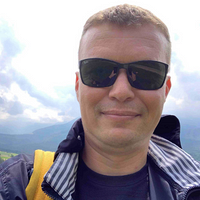It all started with investigating an incident from a user. The threat actor abused one of our components by overwriting the entry-point code and inserting the encrypted payload – impersonating a legitimate file, using it as carrier in an attempt to sneak onto systems.
It is not unusual that the malicious code is hidden behind legit applications, most commonly achieved by process injection or DLL side loading, but this case was an approach we haven’t seen before.
As we looked deeper, it turned out that we were not alone. We found hundreds of similar carriers from dozens of software vendors, including many security companies.
Moreover, we identified two distinct operations that follow the same general scheme: legitimate binaries of software vendors were modified by overwriting the code near the entry point with a loader shellcode, encrypted malicious payload is inserted as a resource (the encryption is simple XOR with a static key), the payloads are delivered via phishing messages, final payload are commodity RATs or credential stealers.
Going down to the details however showed that there were enough differences (different payload injection, different payloads, different focus selecting the impersonated software vendors to nam a few) for us to think that it the two operations belongs to separate threat actors.
Both operations featured a large selection of malicious payloads including the usual initial access families, RATs and credential stealers. But interestingly, these families were totally different between the two.
The first one used commonly deployed RATs (Cobalt Strike, Brute Ratel, Qakbot), and also some newcomers (Latrodectus, Oyster, SSLoad), and showed connections to ransomware groups like Black Basta and BlackSuit.
The second operation mostly delivered Remcos, Lumma Stealer, AsynRAT, Rhadamanthys, XWorm and Vidar. Later this operation was identified by Unit42 as related to the HeartCrypt packer as a service offering.
We also found that some of the abused binaries got resigned by a digital code certificate (the original signature was corrupted when the malicious code was inserted). As we followed this trail, further abused digital signatures were found.
These certificates had a few commonalities: they were used only used to sign binaries from the threat actors (which indicated that the adversary registered it for themselves), were all registered on behalf of small businesses, and the validation period lasted for a year only. So the threat actors didn’t only impersonate software developers by the carrier executables, but also small businesses for the certificates.
In this presentation we will explain how the original components were modified during the injection process, analyze the payloads, and explain the full infection chain in detail from the initial phishing email to the system compromise.
We will also give an insight into tools and techniques we used while collecting the information and the malicious samples from public sources and internal telemetry. We will also go through the process of reconstructing the full infection chains, which required using information from public reports, threat intelligence sources and our internal data.
Gabor Szappanos, Sophos. Gabor graduated from the Eotvos Lorand University of Budapest with degree in physics. His first job was in the Computer and Automation Research Institute, developing diagnostic software and hardware for nuclear power plants.
He started antivirus work in 1995, and has been developing freeware antivirus solutions in spare time.
He joined VirusBuster in 2001 where he was responsible for taking care of macro virus and script malware. Since 2002 he was the head of the virus lab.
Between 2008 and 2015 he was a member of the board of directors in AMTSO (Anti Malware Testing Standards Organizations).
In 2012 he joined Sophos where he works as a Threat Research Director.










